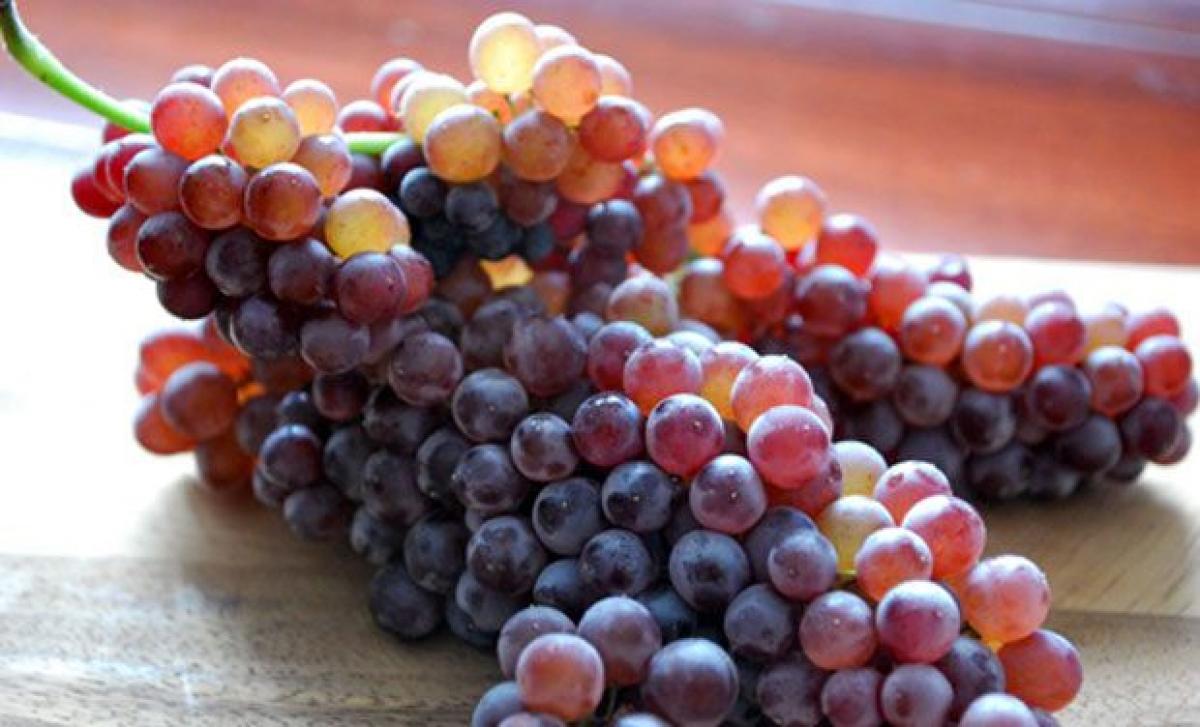Live
- ‘Get Set, Grow Summit 2024’ Focuses on Digital Detox for Families
- Stokes motivates his team to put in extra effort, says England pacer Potts
- From overcoming setbacks to leading India in U19 Women’s Asia Cup, Niki Prasad's amazing journey
- Driving Enterprise Security: Inside Venkata Reddy Thummala’s Leadership Journey
- Constitution debate: PM Modi hails 'Nari Shakti'; makes strong pitch for 'United Bharat’
- Abhijeet Bhardwaj: Revolutionizing Enterprise Analytics with Innovation and Expertise
- Bihar: Inquiry initiated against principal who went to buy veggies during school hours
- Press Sri Lankan Prez for release of Indian fishermen: TN Cong MP to EAM Jaishankar
- TN: DMK postpones executive meet due to heavy rains & Parliament session
- Porous silicon oxide electrodes can fix durability issues in batteries: Researchers
Just In

x
Highlights
After languishing in the shadow of the Chardonnay and Pinot vines that turn out France\'s famed bubbly, four lesser known Champagne grapes are getting an unlikely boost thanks to climate change.
After languishing in the shadow of the Chardonnay and Pinot vines that turn out France's famed bubbly, four lesser known Champagne grapes are getting an unlikely boost thanks to climate change.

Despite their low-profile, Arbane, Petit Meslier, Fromentot and Blanc Vrai are all traditional varietals in this prized region in northeast France and even boast the government-regulated AOC label that authenticates them as genuine Champagne grapes.
But for years they were relegated to the back seat of viniculture following two dramatic episodes that decimated the vineyards of Champagne -- the blight caused by the phylloxera aphid that hit in the late 19th century and wreaked havoc for several years, then later World War I.
Instead wine-makers opted for the more consistent quality and yield of Pinot noir, Meunier and Chardonnay, that have taken centre stage for almost a century.
Today, the rarer grapes that take longer to mature are grown on only 0.3 percent of the 34,000 hectares (84,000 acres) that produce France's treasured sparkling wine.
"If these varietals were forgotten, there's a reason. It's true they are fragile and once every five years they just don't ripen," admitted Michel Drappier, a winemaker in the Urville area of Champagne province.
But he never gave up and today devotes some of his best land to these "lost" fruits, which he grows organically. "It is my duty to maintain this heritage, to preserve biodiversity and to try to bring the best out of these grapes," he said.
And his efforts are starting to pay off.
White flowers, citrus fruits
While farmers in large swathes of the developing world suffer the negative impact of climate change, Drappier says the 2015 harvest of these neglected varietals proved exceptionally good thanks to a scorching summer.
"Grapes are a Mediterranean plant, they need warmth and the rise in temperatures due to climate change has had a good impact on the quality of our wines in Champagne," said Drappier.
"That includes our old, more capricious varietals which may now face a brighter future."
Drappier's 50 acres of Arbane, for example, are set to produce 5,000 kilos (11,000 pounds) of grapes a hectare this year -- only three times less than the more heavily used Pinot noir variety.
Passionate about his trade, the winegrower readily admits he has a soft spot for the white Arbane that grows in small bunches of little berries and may have all but disappeared without devotees like Drappier.
Arbane was "probably brought here by the Romans. Its origin remains a mystery, a study of its genome failed to unveil its parentage," he said.
He credits these rare grapes -- Arbane, Petit Meslier and Blanc Vrai, which he blends with the more classic Chardonnay-- for giving the unique taut, mineral, citrus aroma to a special, 3,000-bottle batch called "Quattuor" he now produces annually.
Warm summers
Two other estates, Moutard and Tarlant, are also making Champagne from these traditional varietals amidst a growing niche market for "authentic" flavours of days gone by -- similar to the "foody" trends reviving heirloom fruits and vegetables.
At the Interprofessional Champagne Wines Committee (CIVC), specialists are closely watching the impact of global warming on the grapes.
"For the moment, it is totally beneficial," said Dominique Moncomble, CIVC's technical director.
"Since the 1990s, we have observed that flowering and harvests have been occurring about two weeks earlier than usual," he added.
Grapes are now also bigger, healthier and with an alcohol content that is higher by about a degree. Higher carbon dioxide levels in the atmosphere, meanwhile, are found to be beneficial for photosynthesis.
"We are looking at future scenarios that take into account possible changes in climate," said Moncomble.
"In this context, these so-called forgotten varietals deserve our attention, and not just because of their heritage."

Next Story
More Stories
ADVERTISEMENT
© 2024 Hyderabad Media House Limited/The Hans India. All rights reserved. Powered by hocalwire.com







